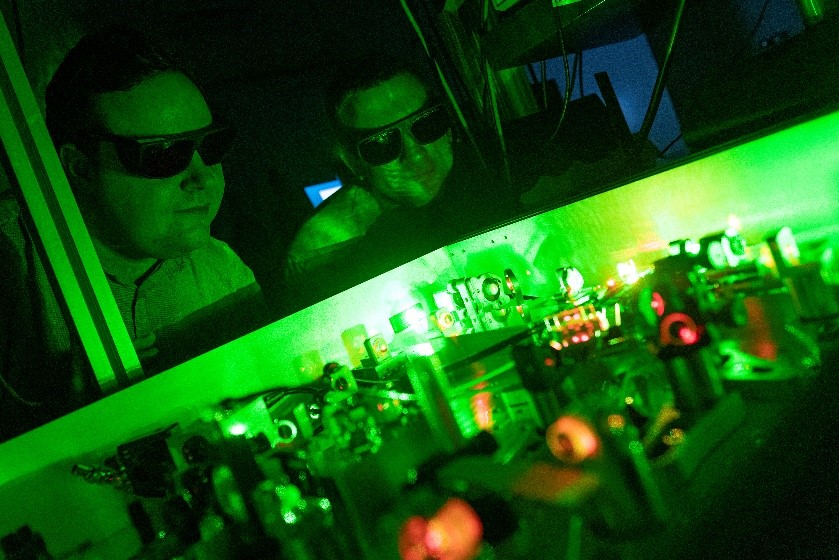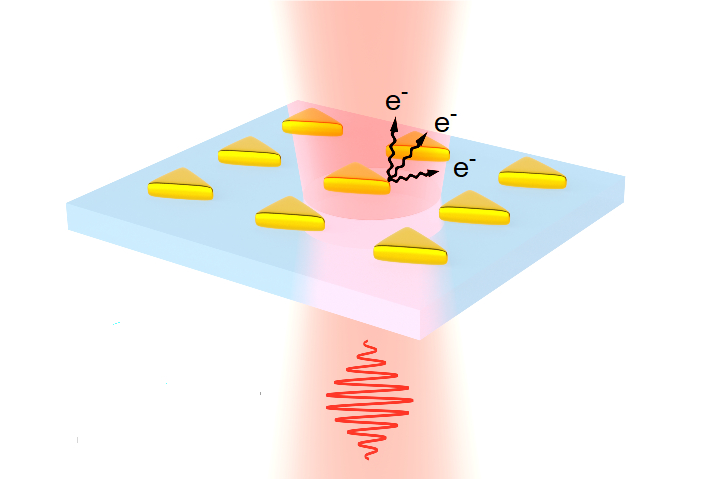An important, new discovery was published by the research group of Péter Dombi at the Wigner Research Centre for Physics (Wigner R. C. P.), in connection with the so-called tunneling effect. The tunneling effect is an important quantum mechanical phenomenon, which revolutionized physics in the XX. century. The result appeared in Nano Letters, the leading international journal of nanosciences.
The essence of the tunneling effect is that an electron can penetrate an obstacle in its way (a so-called potential barrier), even if it doesn’t have enough energy to do it according to classical physics. This phenomenon was first mentioned in the 1920-s, and afterward it was studied by many scientists. During the last 70-80 years, 5 Nobel-prizes were handed out for research which produced results or practical applications in connection with the tunneling effect. An important example for the latter is the scanning tunneling microscope, with which surfaces can be examined with nanometer precision.

Scientists of the Wigner R. C. P. working on the alignment of the laser used for the study.
The tunneling effect can be induced with modern lasers as well. Researchers at the Wigner R. C. P. used a laser beam with a spatial extent of a twentieth of the diameter of an average piece of hair. The spatial concentration of the energy of the laser radiation was further increased with a nanooptical phenomenon, which was induced by the gold nanostructures on the surface of the sample. During this process, the electric field of the laser was enhanced by more than an order of magnitude, and this was used to demonstrate a new manifestation of the tunneling effect. In this regime electrons show a mixed behavior: partly they tunnel through the barrier, partly they overcome it by absorbing the energy needed from the laser field.

Emission of electrons from gold nanoparticles due to illumination by ultrashort laser pulses.
The result and further fundamental research of the physicists at the Wigner R. C. P. helps the international scientific community to better navigate the realm of tunneling-related phenomena. This helps the development of practical applications, e.g. the fabrication of nanooptical devices, or electron sources which produce electron bunches with temporal durations that are a millionth of a billionth of a second. These applications have the potential to revolutionize physical and chemical research, and could lead to the construction of a new generation of electron microscopes.
Link to the original publication:
https://pubs.acs.org/doi/10.1021/acs.nanolett.1c04651



